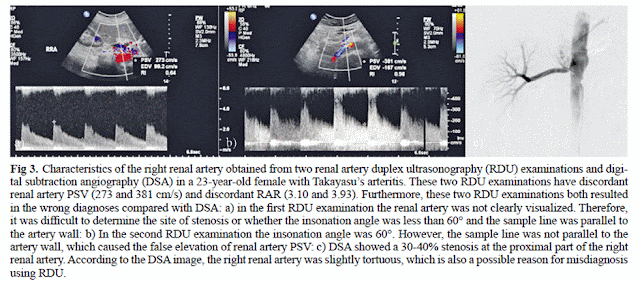Smooth Sailing With Sonography Literature Reviews
Kathryn E. Zale, MS, RDMS, RVT
CÁCH ĐÁNH GIÁ Y VĂN SIÊU ÂM [để tiến hành nghiên cứu]
Xác định y
văn hàng đầu FirstRate
Đôi khi trong việc xác định một điều gì đó, trước tiên cần loại
trừ những gì không liên quan. Khi chọn y văn,
không chỉ là chọn bất kỳ chủ đề nào mà tập trung vào vấn đề quan tâm để xem xét nó.
Tìm cơ sở lý luận của tác giả nhằm cập nhật kiến thức
và làm mới với bằng chứng thực nghiệm mới được công bố.
Tài liệu tóm tắt nghiên cứu thích hợp có thể phát hiện trong
các bài báo hoặc sách giáo khoa. Tuy nhiên, tài liệu chỉ có giá trị khi cung cấp
tổng hợp các thông tin này.
Một bài phê bình y văn có thể giúp người đọc xác định
giao thức siêu âm tốt nhất để có hình ảnh một cơ quan / bệnh lý là gì hoặc dấu
hiệu siêu âm nào tốt nhất để chẩn đoán bệnh lý. Nó có thể so sánh một công nghệ
mới với công nghệ cũ hoặc so sánh độ chính xác chẩn đoán của nhiều phương thức
hình ảnh để chẩn đoán bệnh lý.
Chuẩn bị và
sử dụng y văn
Khi xác định được lý do hoặc khoảng cách trong kiến thức lâm sàng, đó là lúc để thu thập tài liệu. Điều quan trọng là có thông tin kỹ lưỡng,
chính xác và cập nhật.
Dựa trên bằng chứng rất hữu ích để nhanh chóng đánh giá
thông tin. Xếp thành kim tự tháp bằng chứng sẽ thấy rằng bằng chứng chất lượng
thấp ở phía dưới và bằng chứng cao hơn là ở trên cùng. Nếu bằng chứng càng cao,
chất lượng của tổng quan tài liệu càng cao.
Khi không có số lượng tham chiếu được đặt ra, đánh giá
tài liệu thường xuyên sẽ có tới 20 hoặc nhiều trích dẫn. Với rất nhiều thông
tin lưu giữ, việc sắp xếp tài liệu tham khảo rất quan trọng. Các loại cơ sở dữ
liệu có thể hỗ trợ tổ chức với các công cụ trực tuyến.
Do đó lượng thông tin cần được tổng hợp có thể theo hướng dẫn sau.
Hướng dẫn xem lại y
văn để Chuẩn bị và trích xuất dữ liệu
1. Đọc, đọc, đọc cập nhật trên y văn
Cần đọc hàng ngày và hàng tuần. Nên là thói quen và ưu tiên
hàng đầu, đặc biệt là trước khi chọn viết
về một chủ đề. Tìm kiếm bài viết thường xuyên và có hệ thống rất có lợi. Công cụ
trực tuyến là PubCrawler, tích hợp với PubMed.
2. Chọn từ khóa hiệu quả có thể có tác động lớn đến chất lượng
kết quả mà bạn nhận được từ cơ sở dữ liệu tìm kiếm. Nói chuyện với một thủ thư
hoặc ai đó biết cách thực hiện những tìm kiếm này có thể tiết kiệm nhiều thời
gian và sẽ cung cấp cách để tối đa hóa hiệu quả của bạn.
3. Lưu và loại trừ đúng cách những y văn nên được thực hiện sớm. Tôi có xu hướng dựa
trên các tiêu chí nằm trong kim tự tháp dựa trên bằng chứng, thường loại bỏ tất
cả các bằng chứng cấp thấp. Tất nhiên, đối với một số chủ đề, điều này có thể
khó thực hiện.
4. Thu thập bằng chứng có chất lượng. Quá trình này liên quan đến dùng các từ khóa chính để tìm tài liệu trong cơ sở dữ liệu. Có nhiều tùy
chọn cơ sở dữ liệu, tốt nhất trong số đó bao gồm PubMed, Ovid MEDLINE, CINAHL, TRIP Database Plus, cơ sở dữ liệu của
Burrane về các tổng quan hệ thống, hoặc scholar Google.
5. Đánh giá kết quả của bạn. Một khi đã tìm thấy bài viết,
bạn phải đánh giá sự liên quan của nó. Nói chung, thông tin trên 10 năm phải loại
bỏ, trừ khi nó là một bài báo gốc thích hợp và có liên quan. Một phiếu đánh giá
cũng hữu ích, nên sử dụng một cái dựa trên Phương pháp PICO (dân số, can thiệp,
nhóm so sánh, kết quả). Chọn lọc là quan trọng trong việc làm cho nghiên cứu của
bạn có liên quan và kịp thời.
6. Viết kết quả của bạn
Viết bằng văn bản là cách kết hợp lại các bằng chứng với nhau.
Bài viết khoa học nên rõ ràng và súc tích, với lập luận mạnh nhất được viết trước.
Sơ đồ dòng chảy của lựa chọn nghiên cứu của bạn có thể hữu ích. Nên có một phác thảo và xem xét cẩn thận về cách bố cục
bài báo.
7. Sửa lại, sửa lại, sửa lại một lần nữa, nên làm điều này nhiều
lần. Rất nên có người cố vấn hoặc góp ý đáng tin cậy giúp bạn phê bình và sửa chửa nghiên cứu của bạn.
Ảnh hưởng đến
Thực hành lâm sàng
Sau khi được in, cần đánh giá chất lượng tài liệu để thông
báo và áp dụng lâm sàng. Chúng rất quan
trọng trong một nghề có đổi mới công nghệ không ngừng và thực hành chuyển đổi.
Nếu được thực hiện đúng, kết quả của những nghiên cứu này có thể trở thành tiêu
chí cơ bản phù hợp lâm sàng có ảnh hưởng trực tiếp đến bệnh nhân. Chủ đề lâm sàng
được đánh giá tốt không chỉ có tác động lâu dài mà còn giúp thông báo cho bác
sĩ lâm sàng ngay lập tức với những lựa chọn tốt nhất cho bệnh nhân.
Kathryn E. Zale, MS, RDMS, RVT
Đại học Khoa học Y tế Pennsylvania
850 Greenfield Road.
Lancaster, PA 17601
kazale@pacolitic.edu












